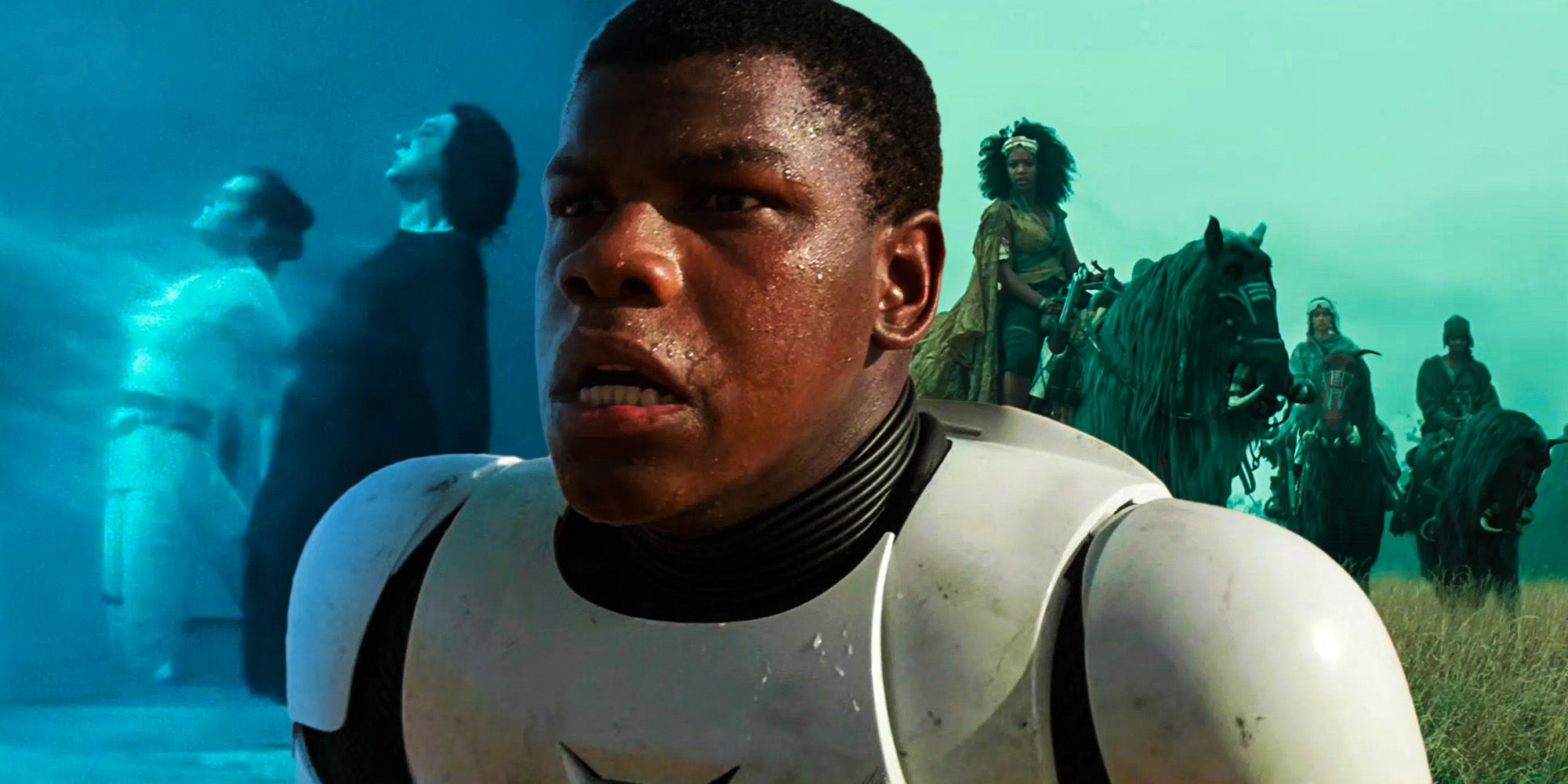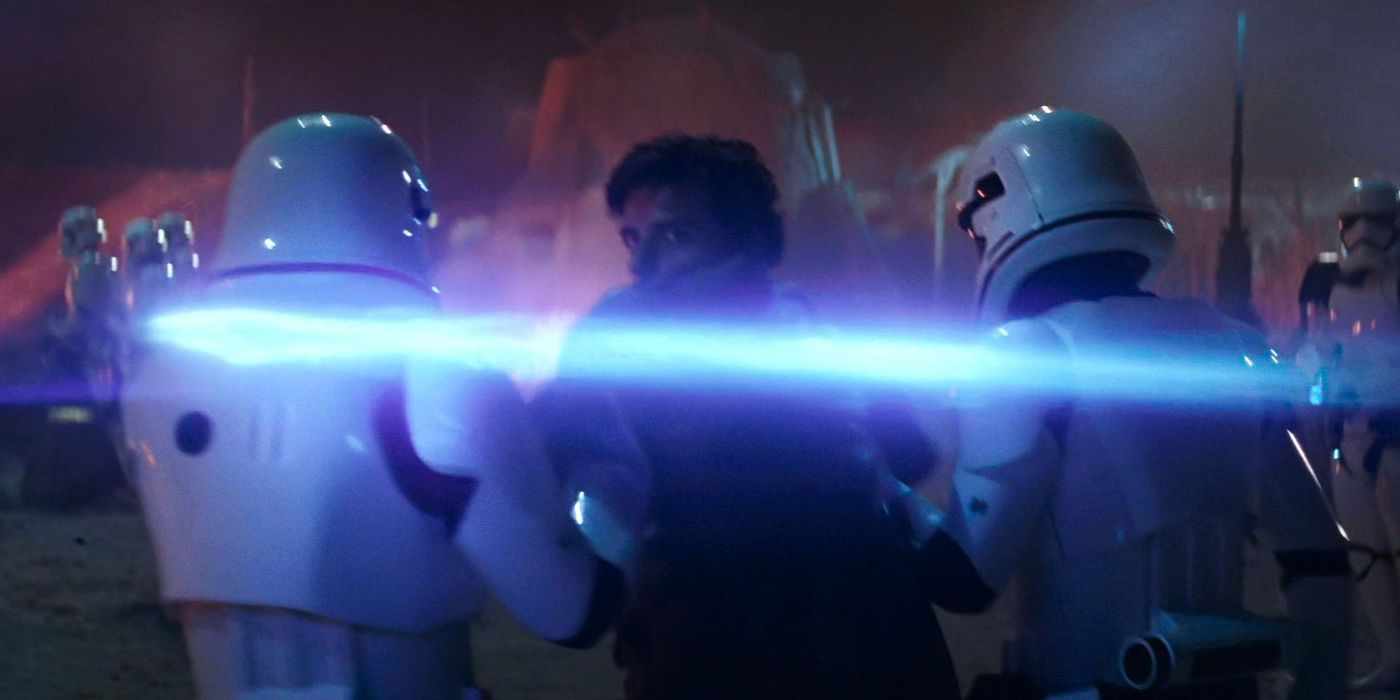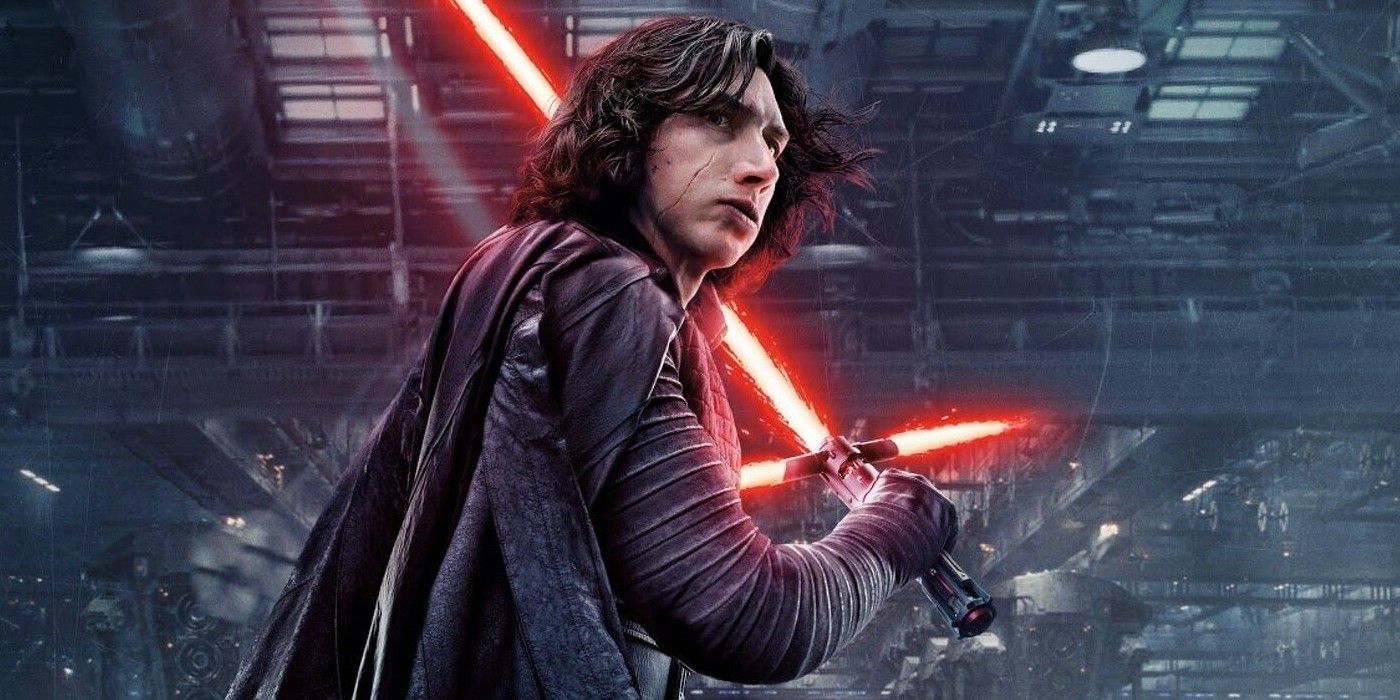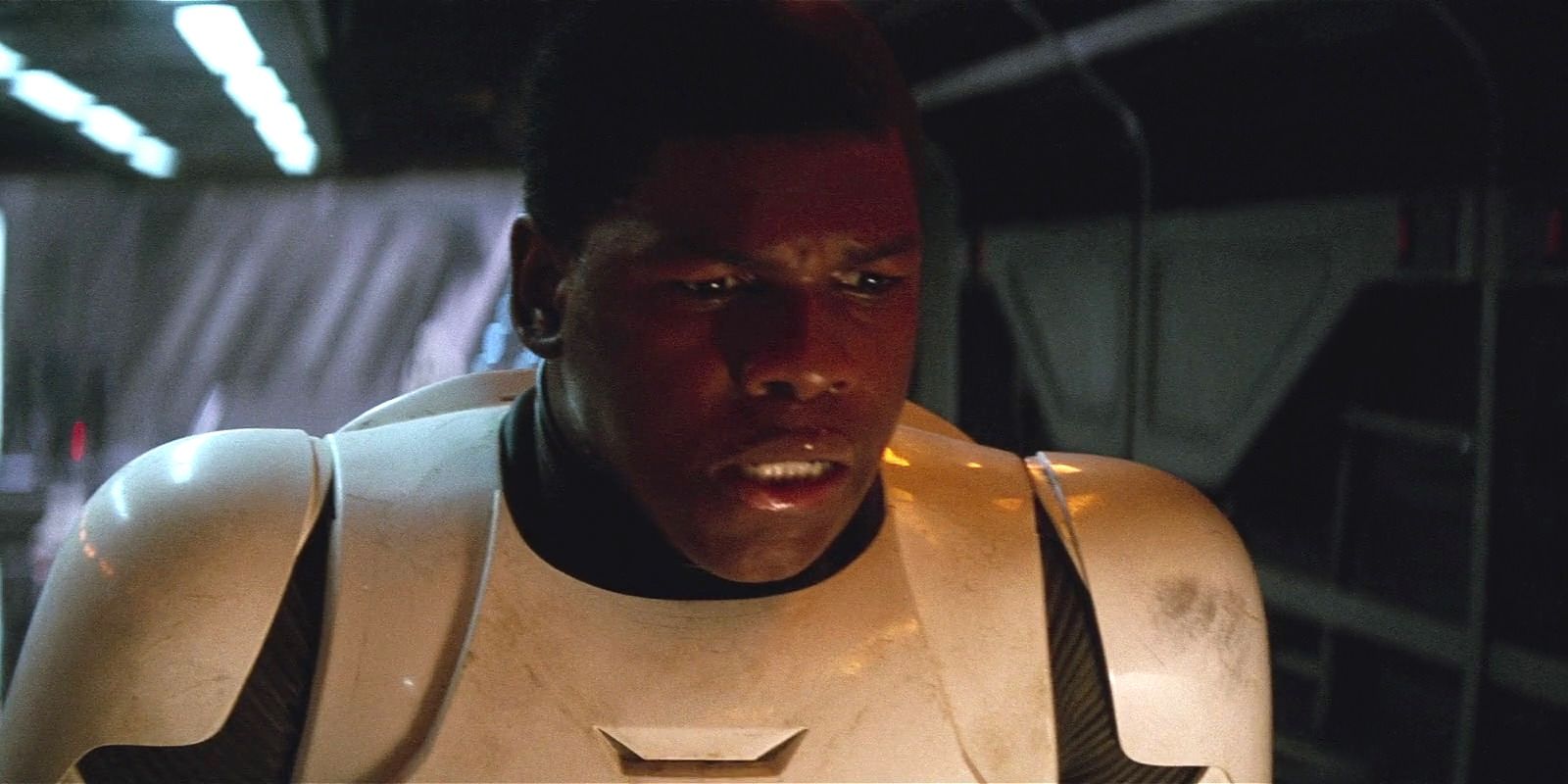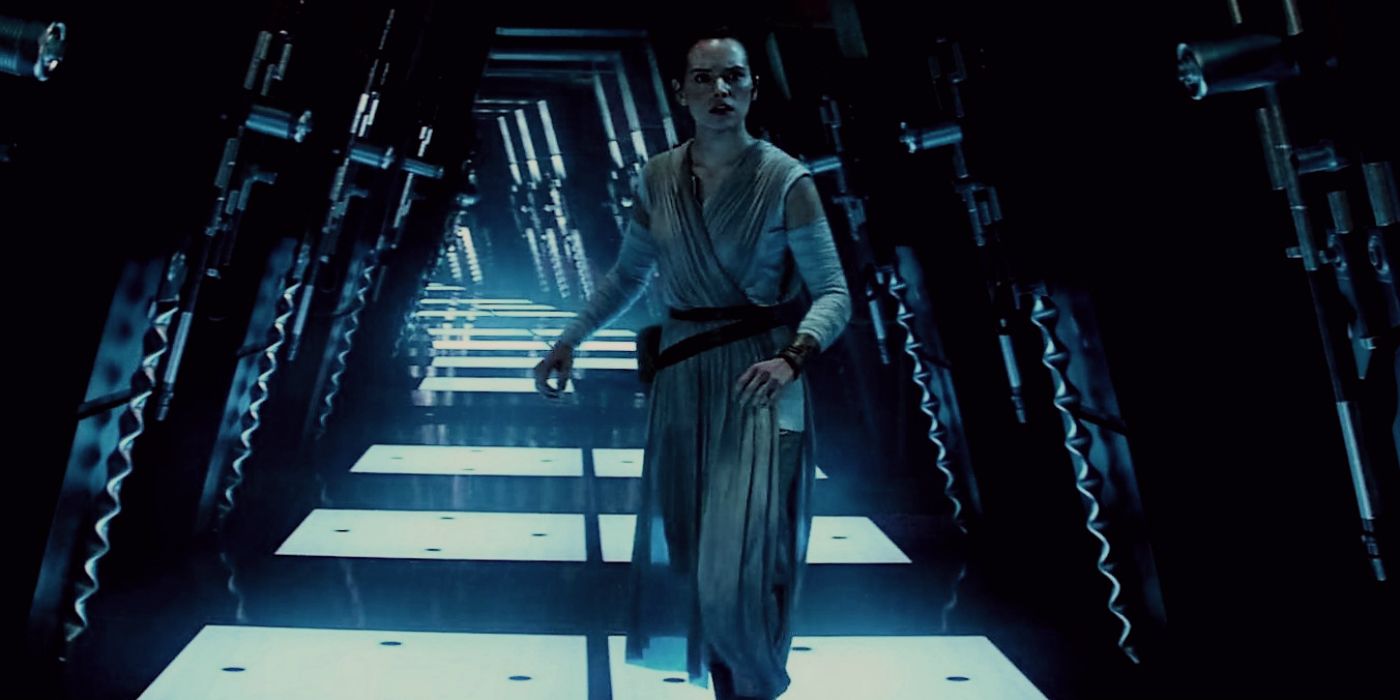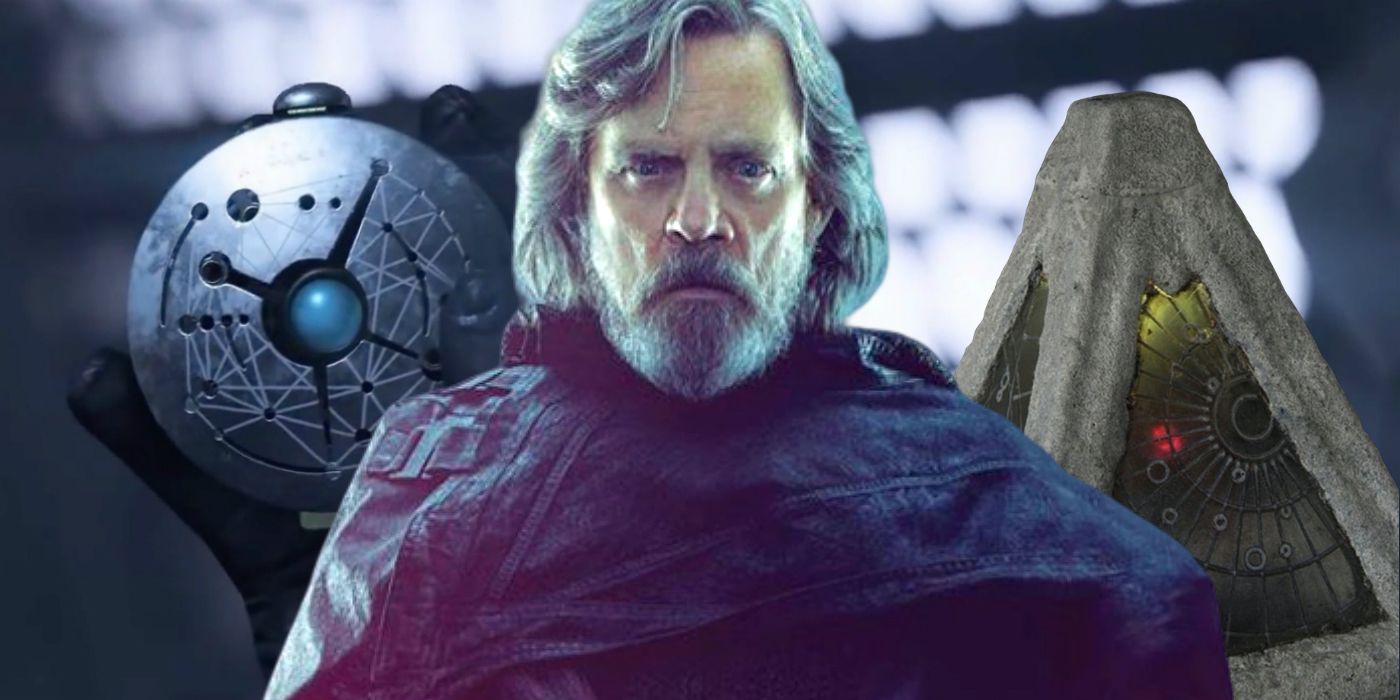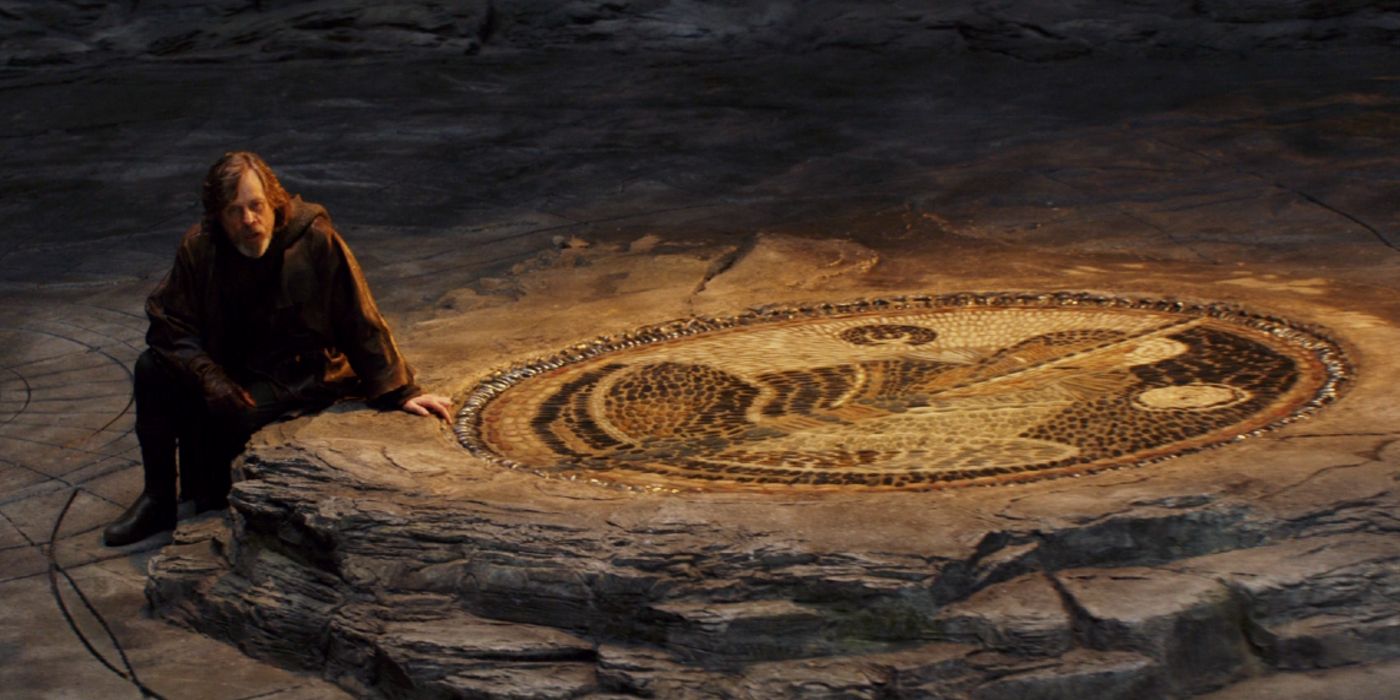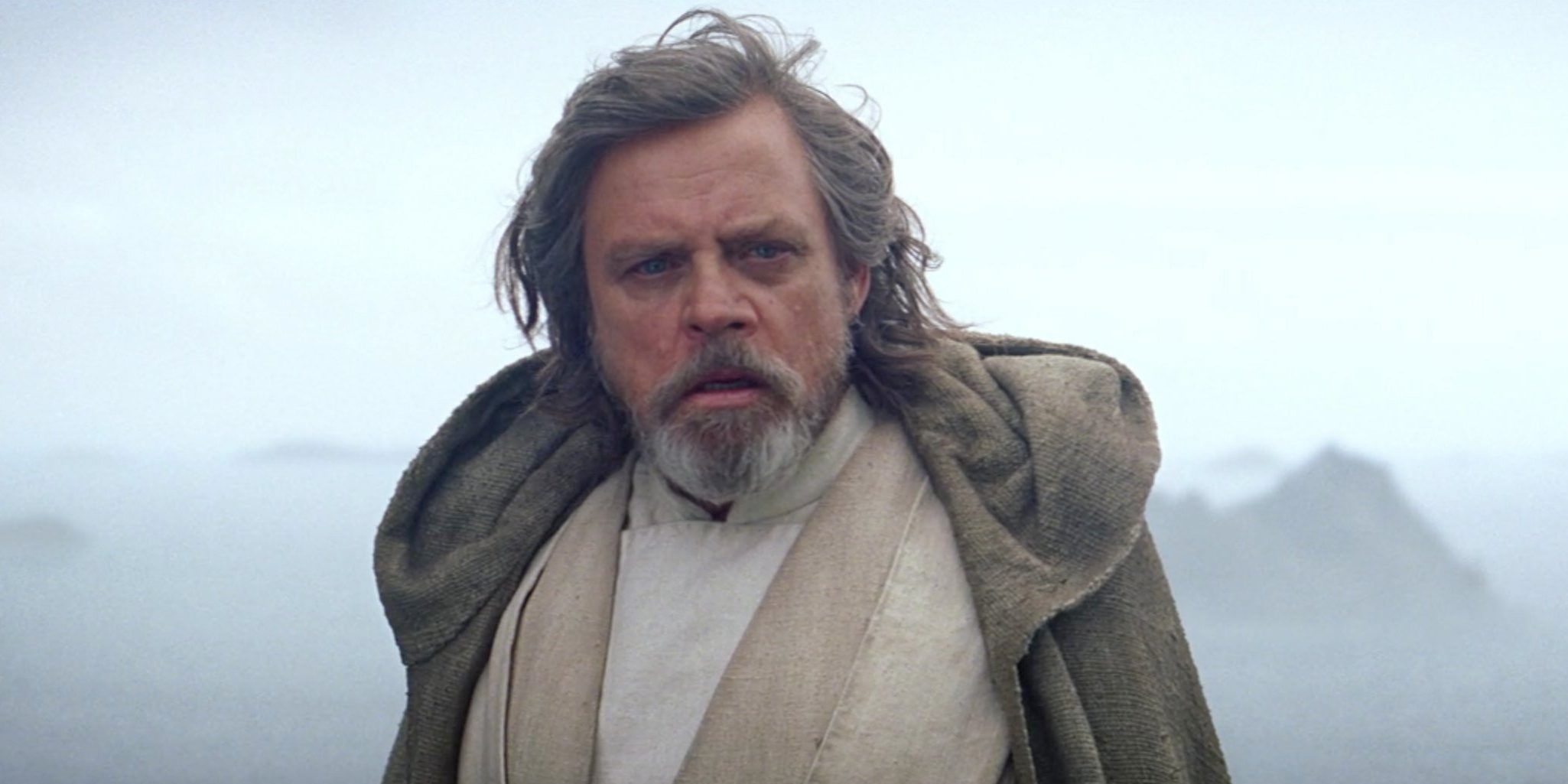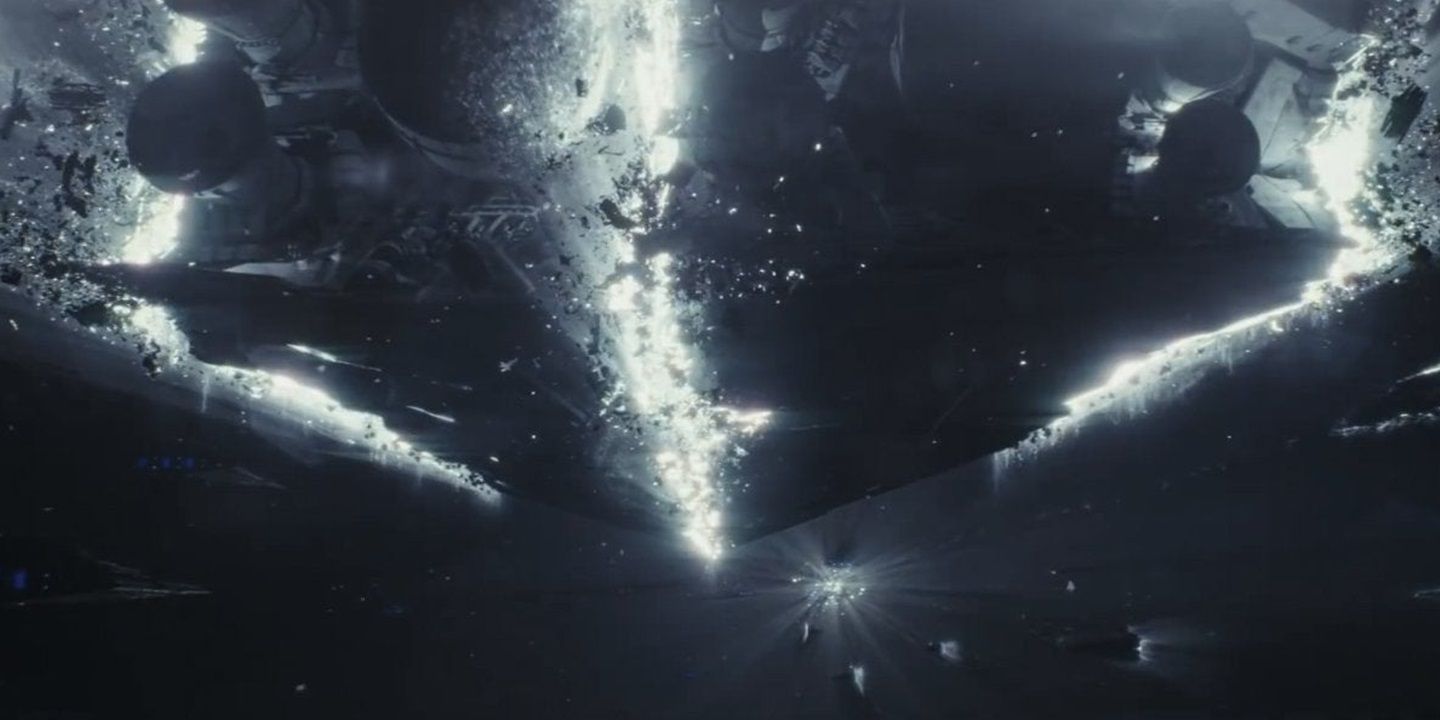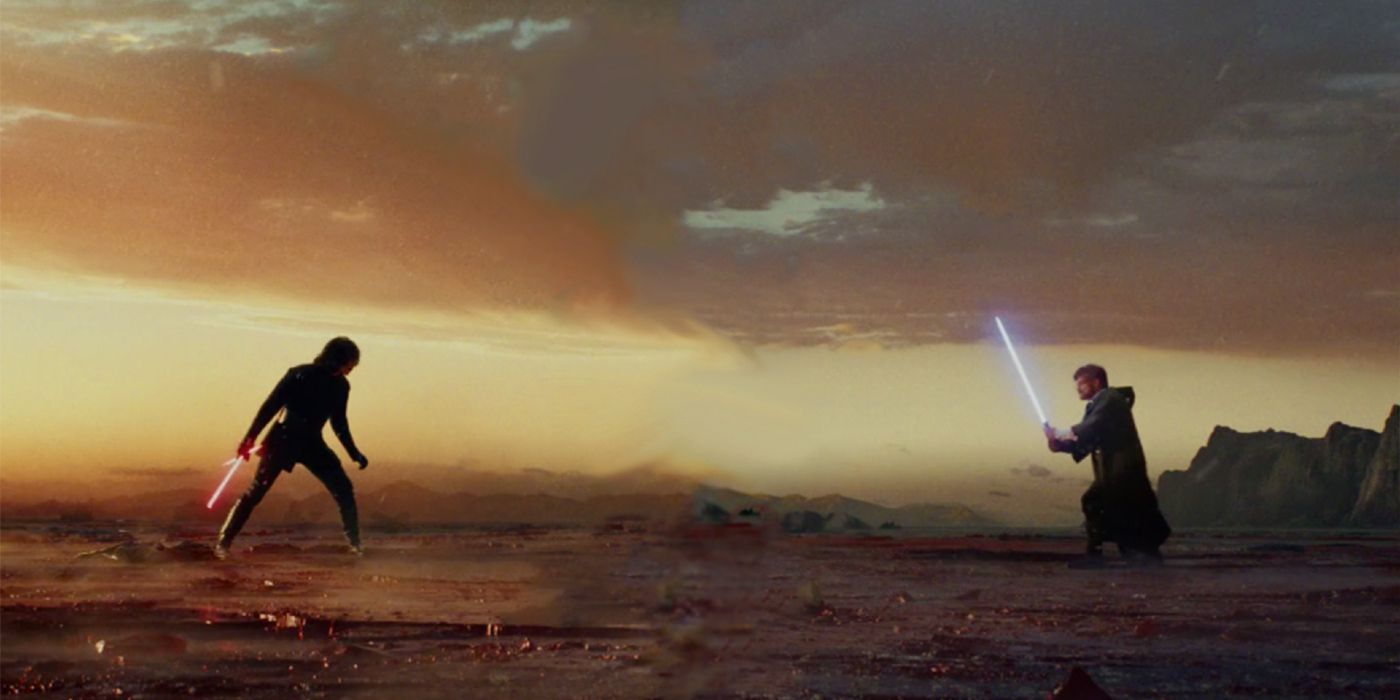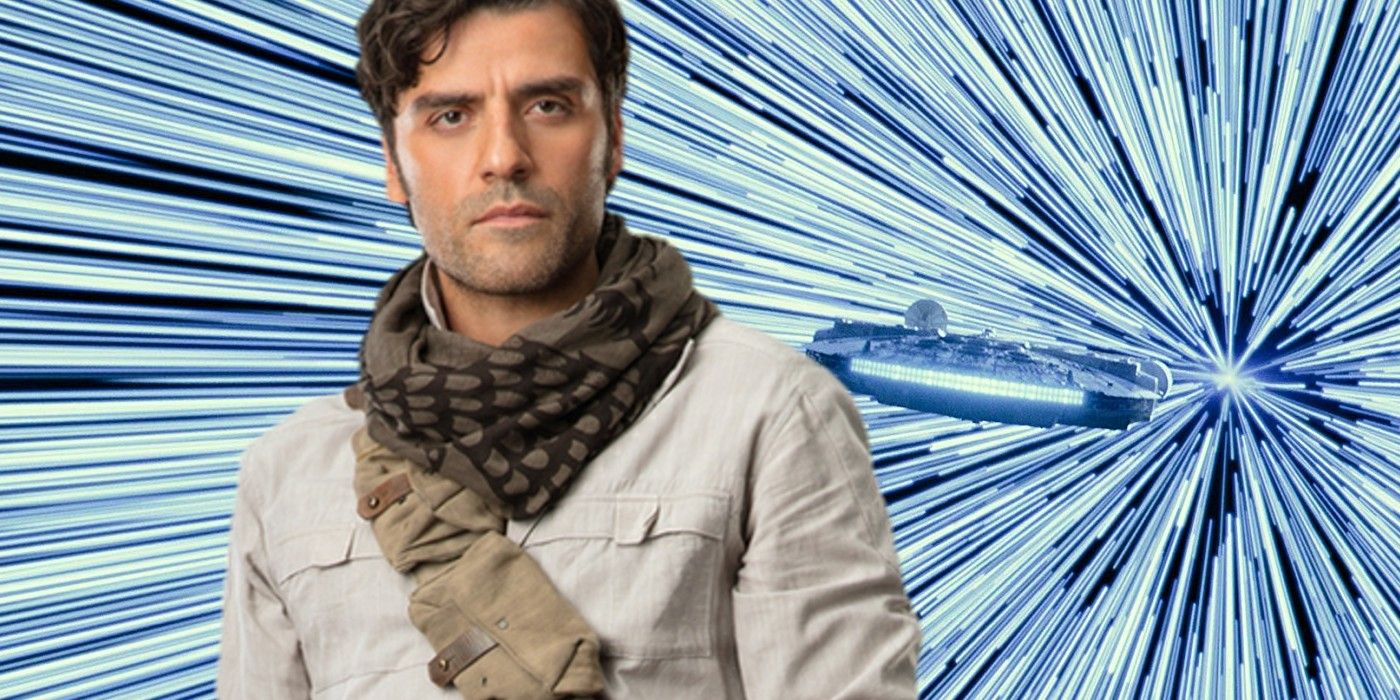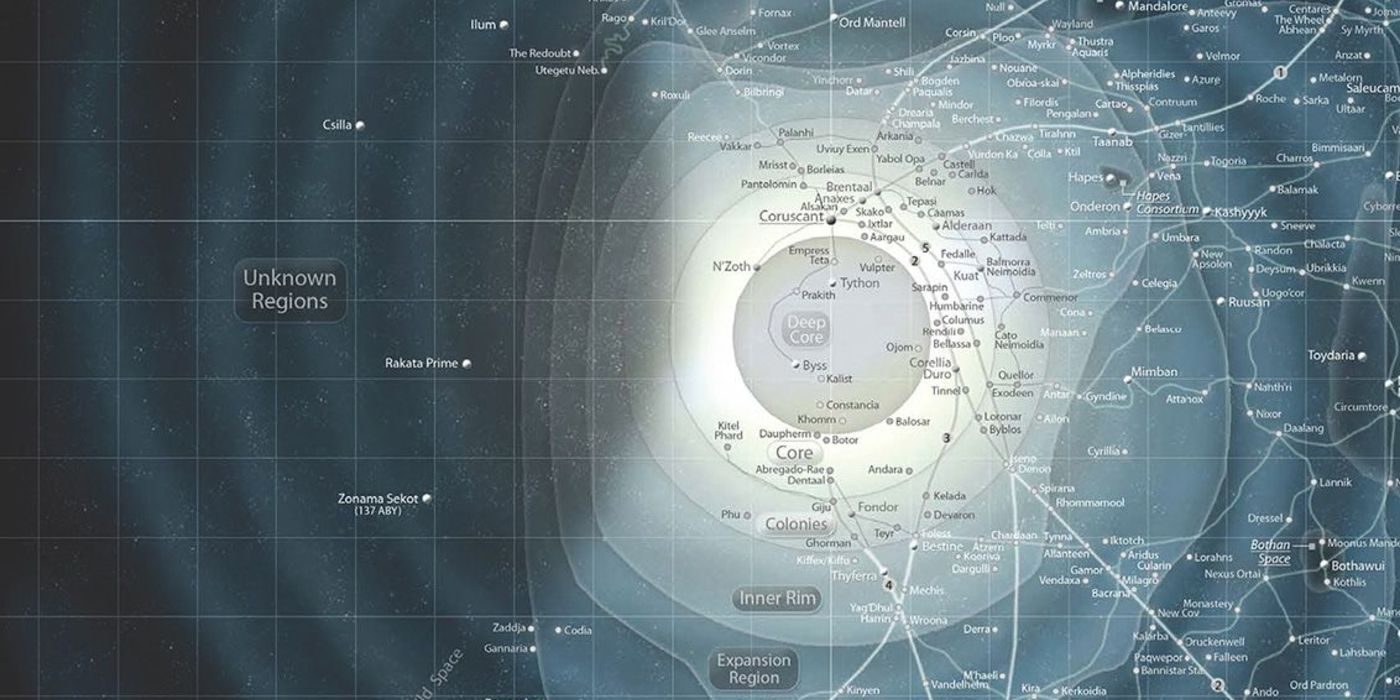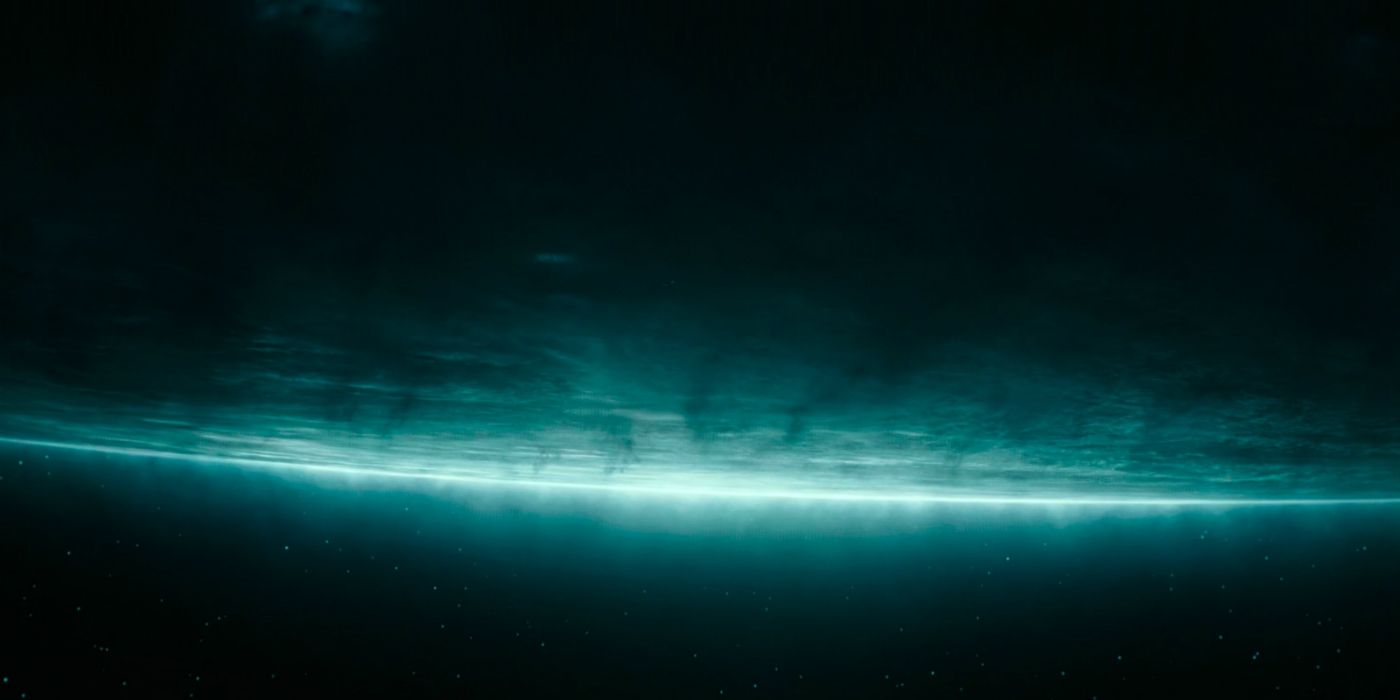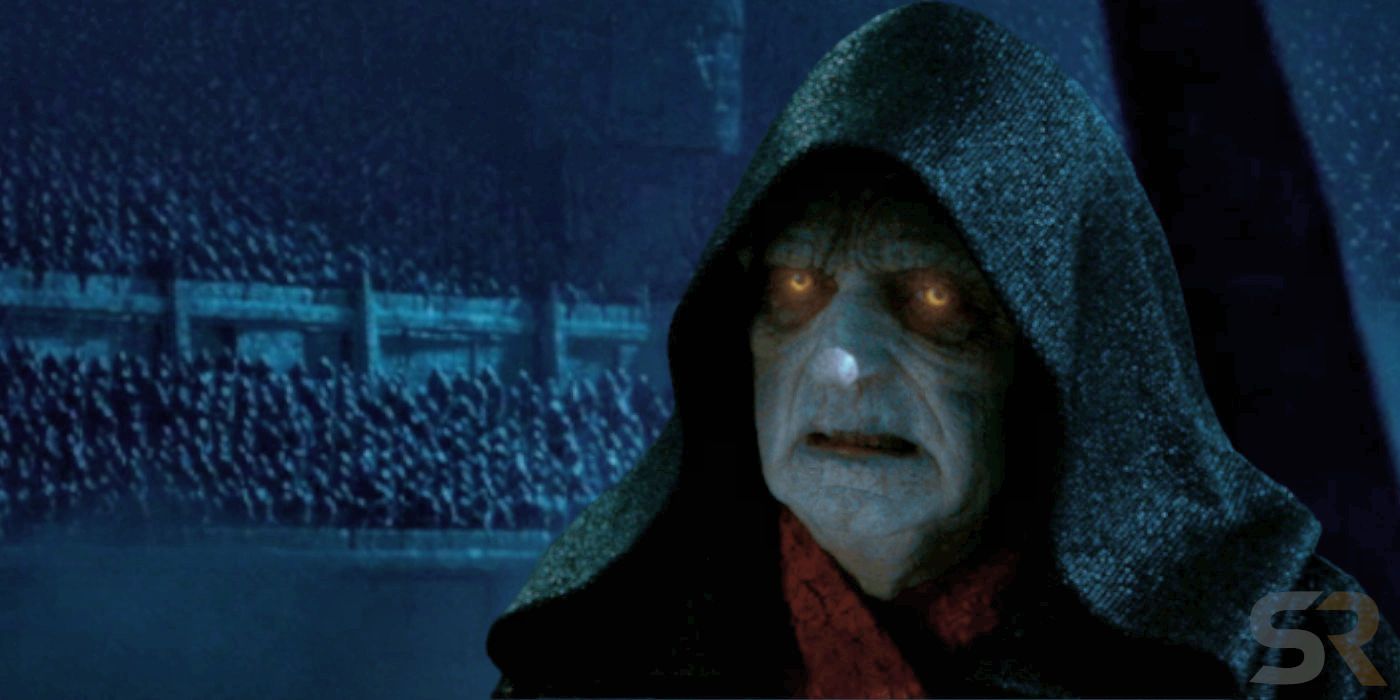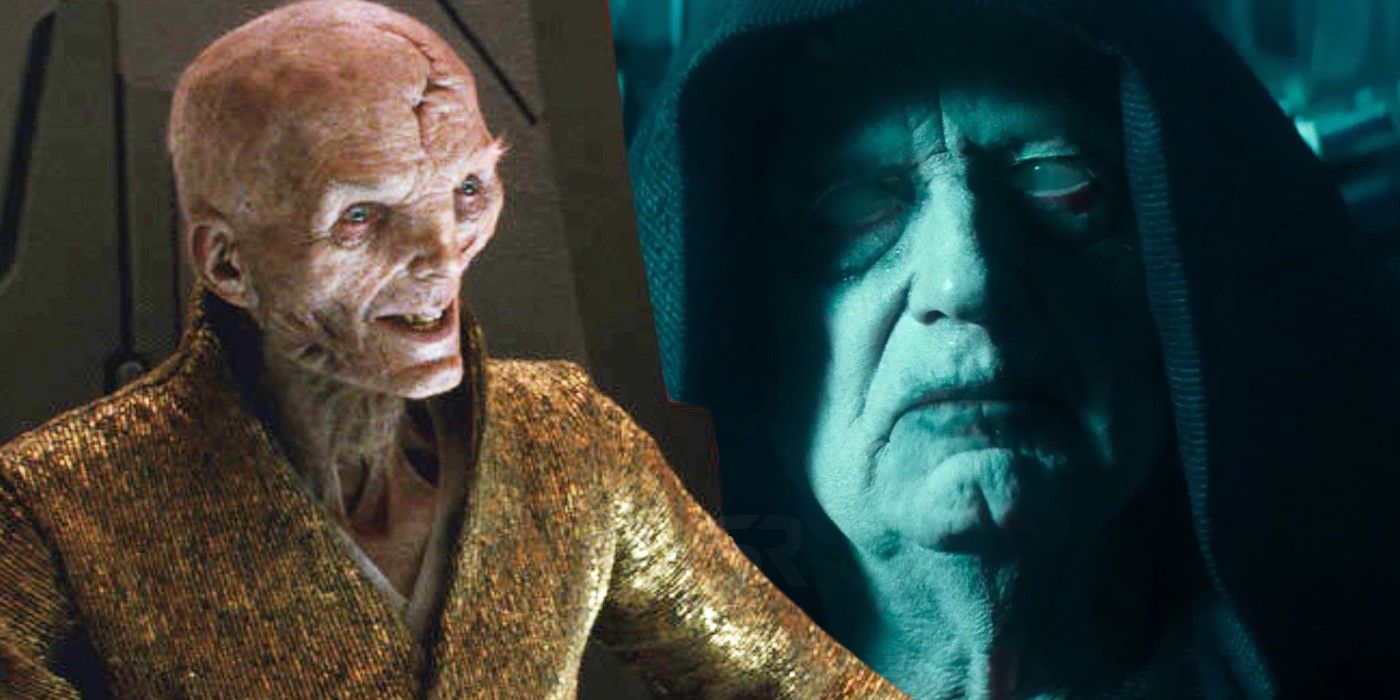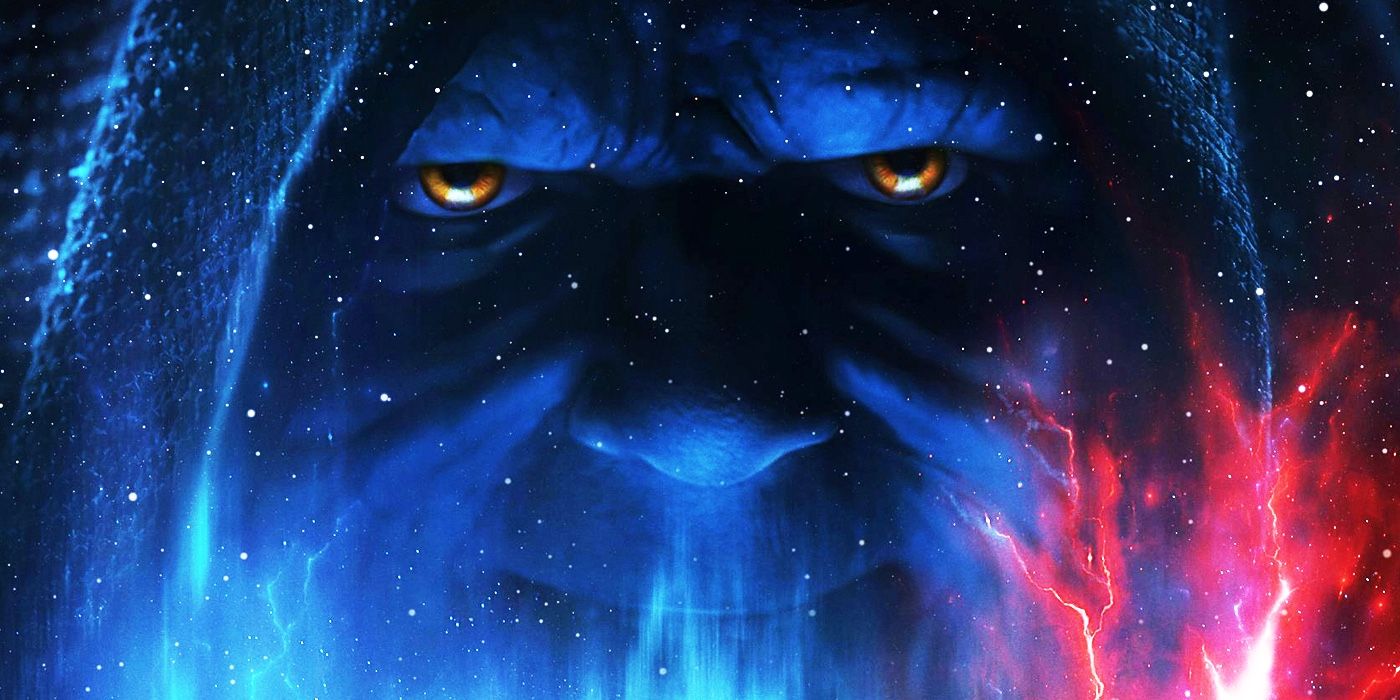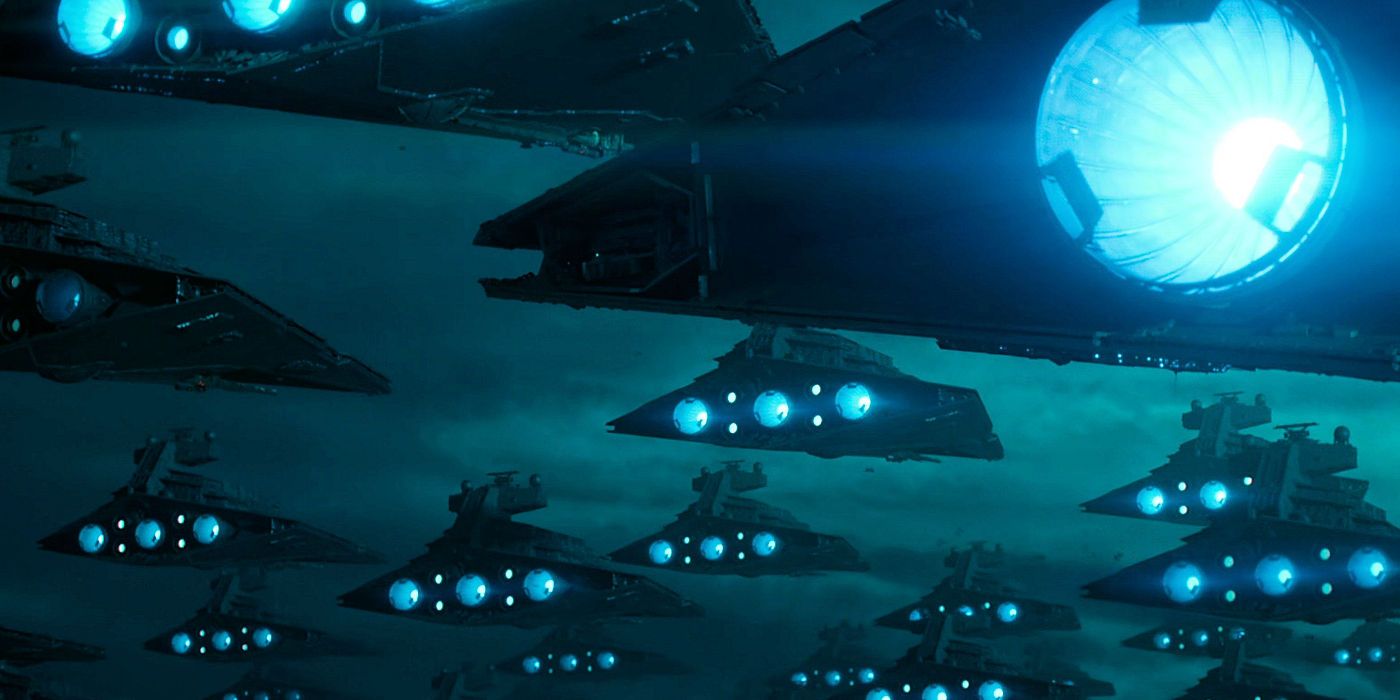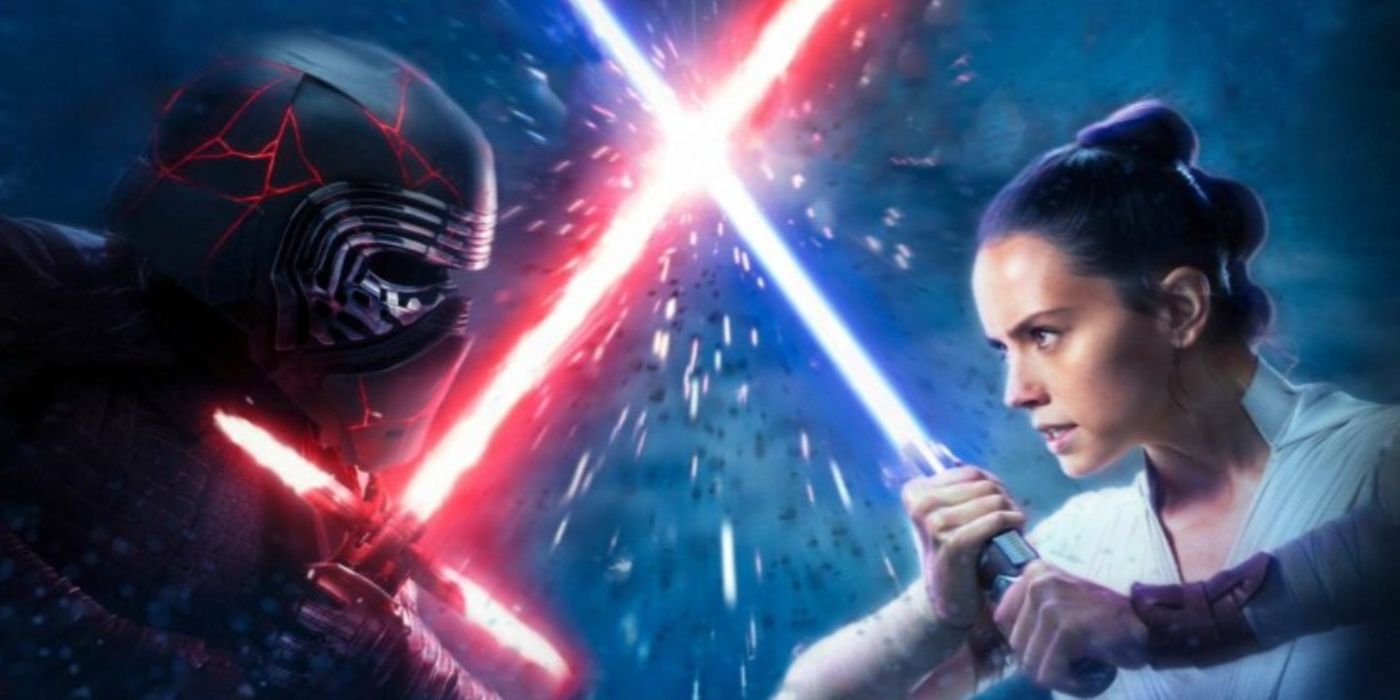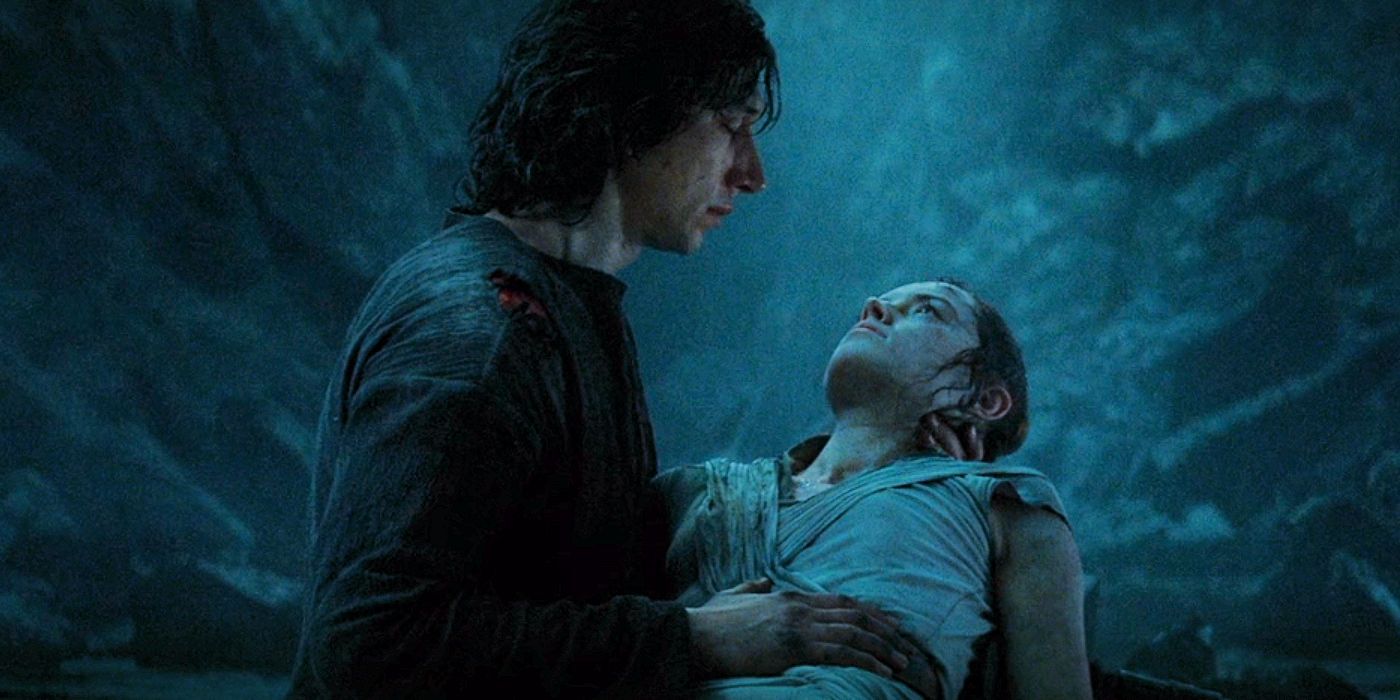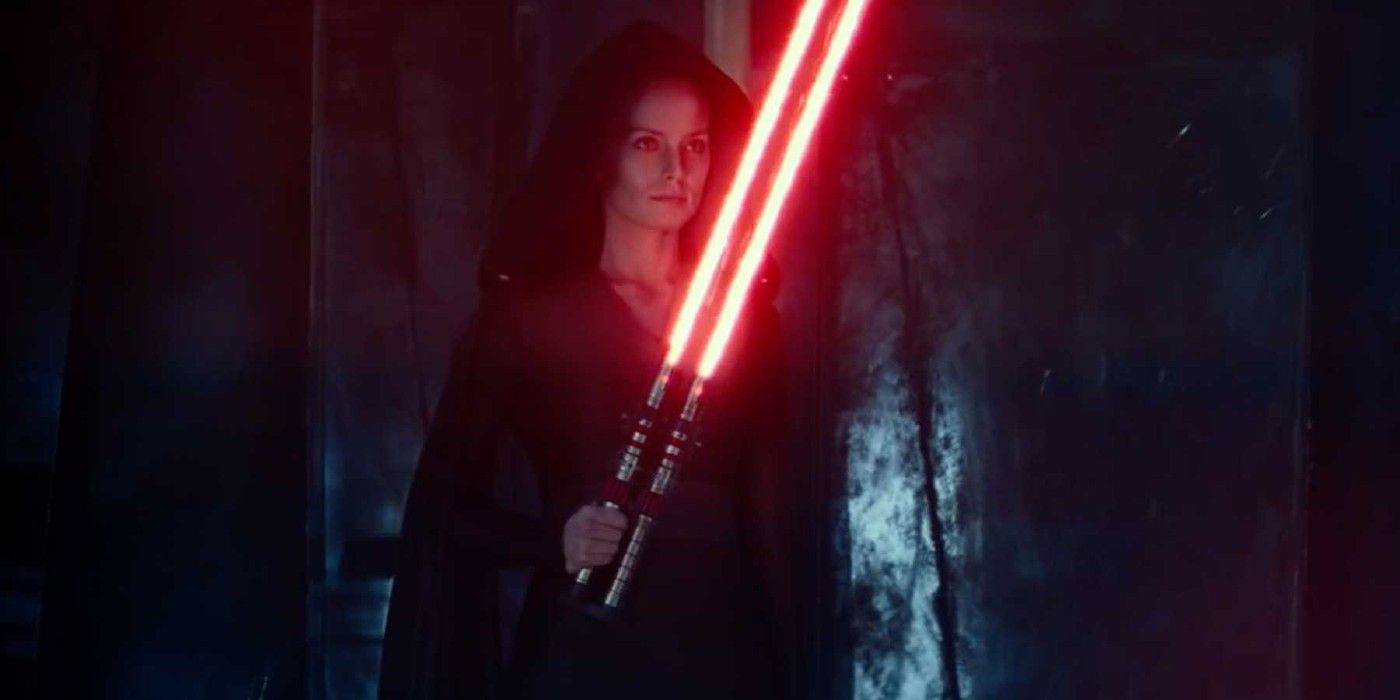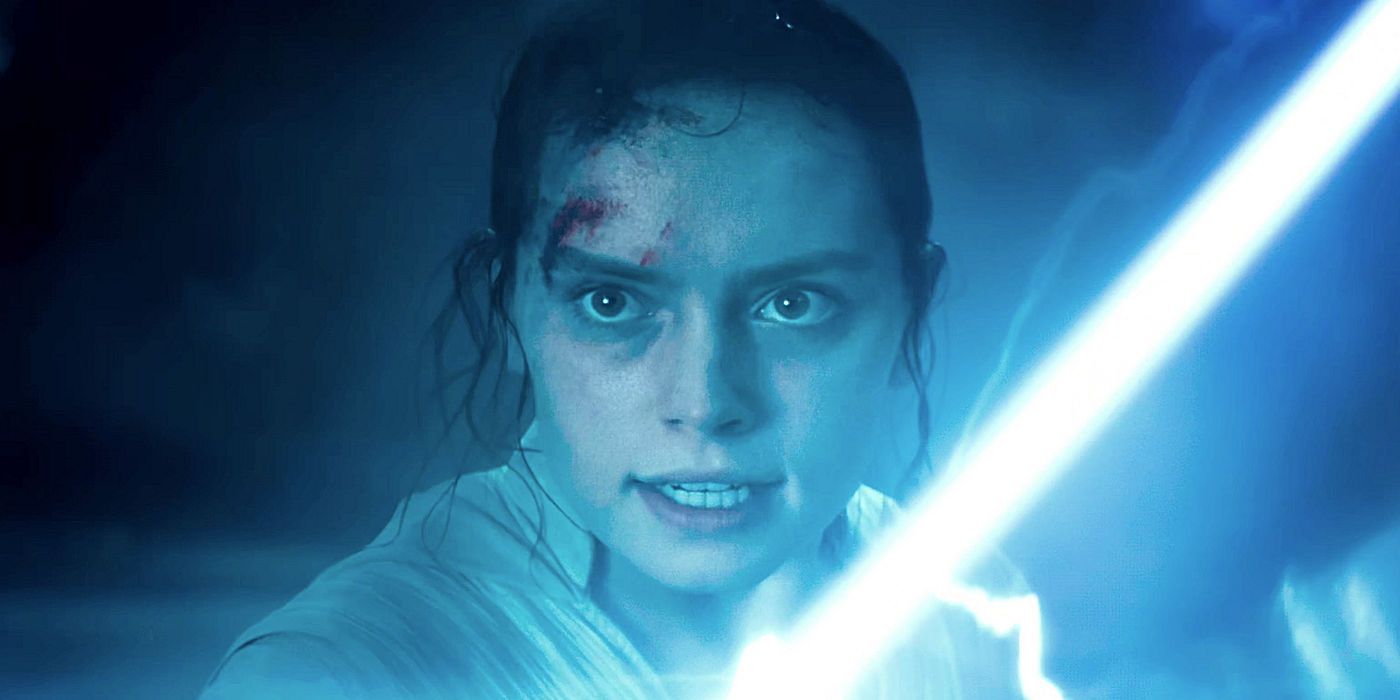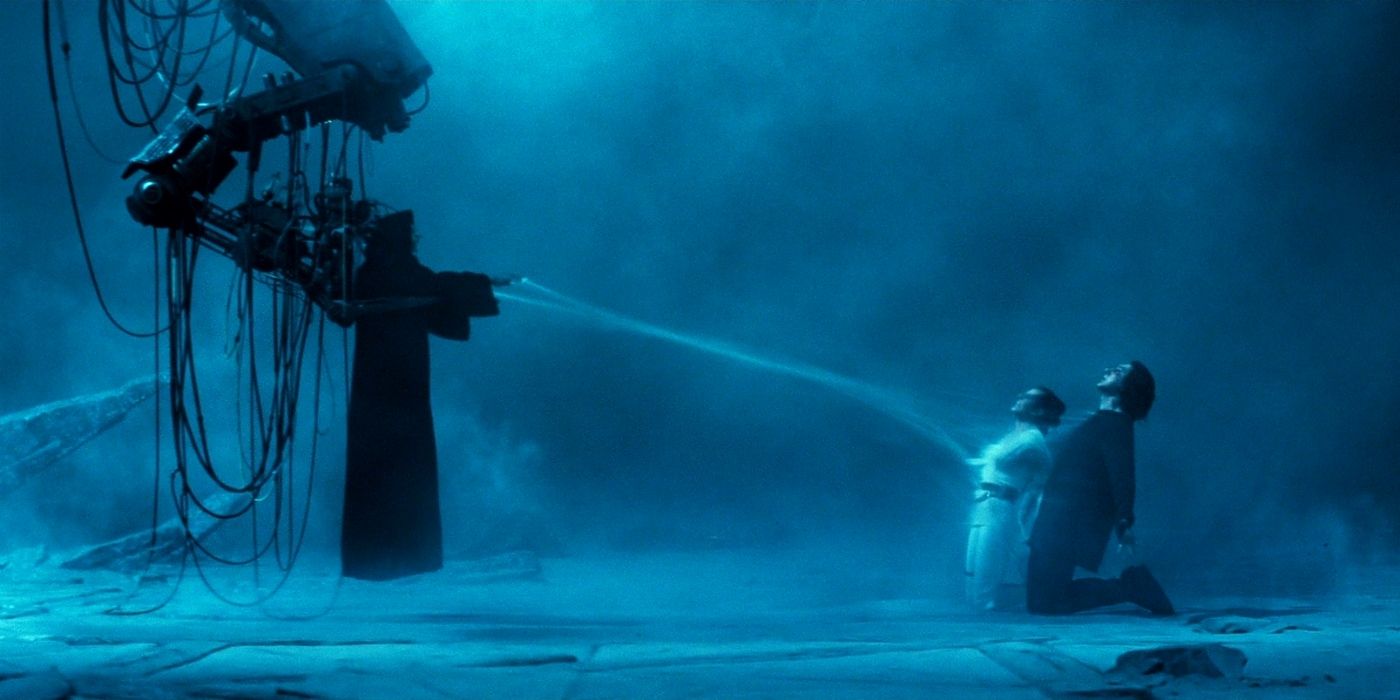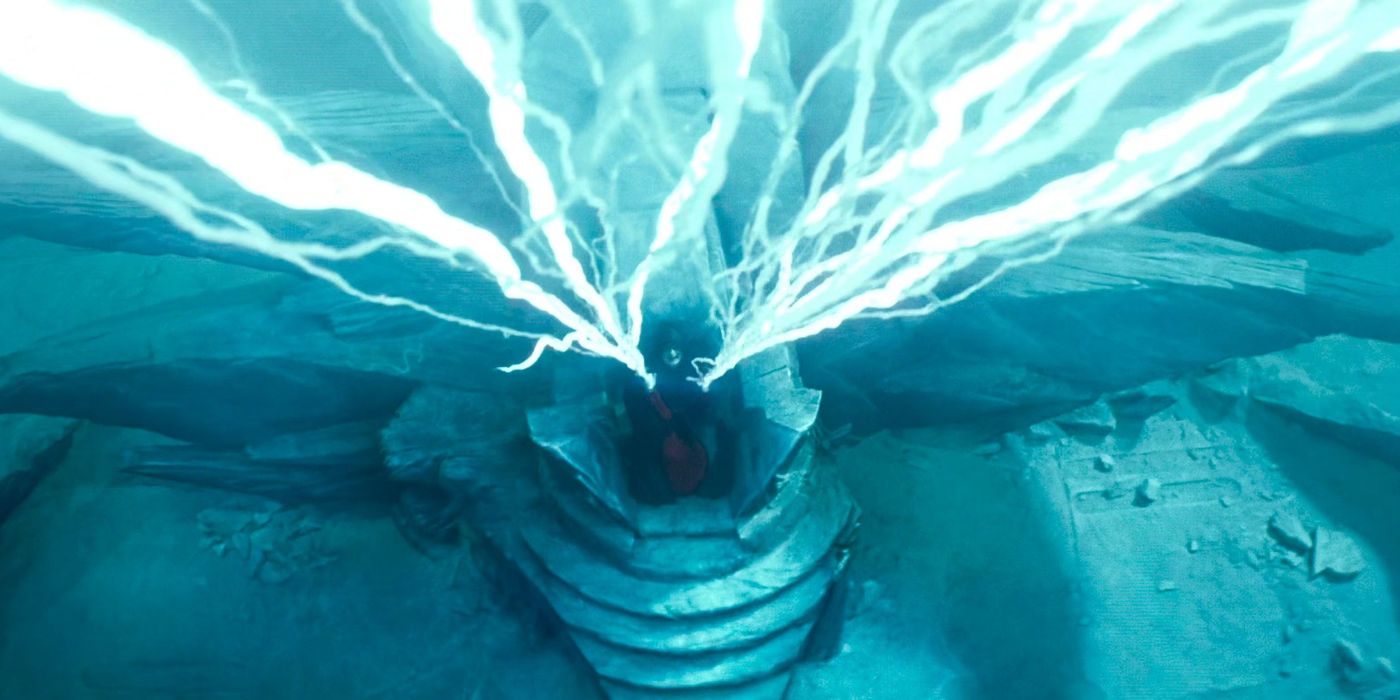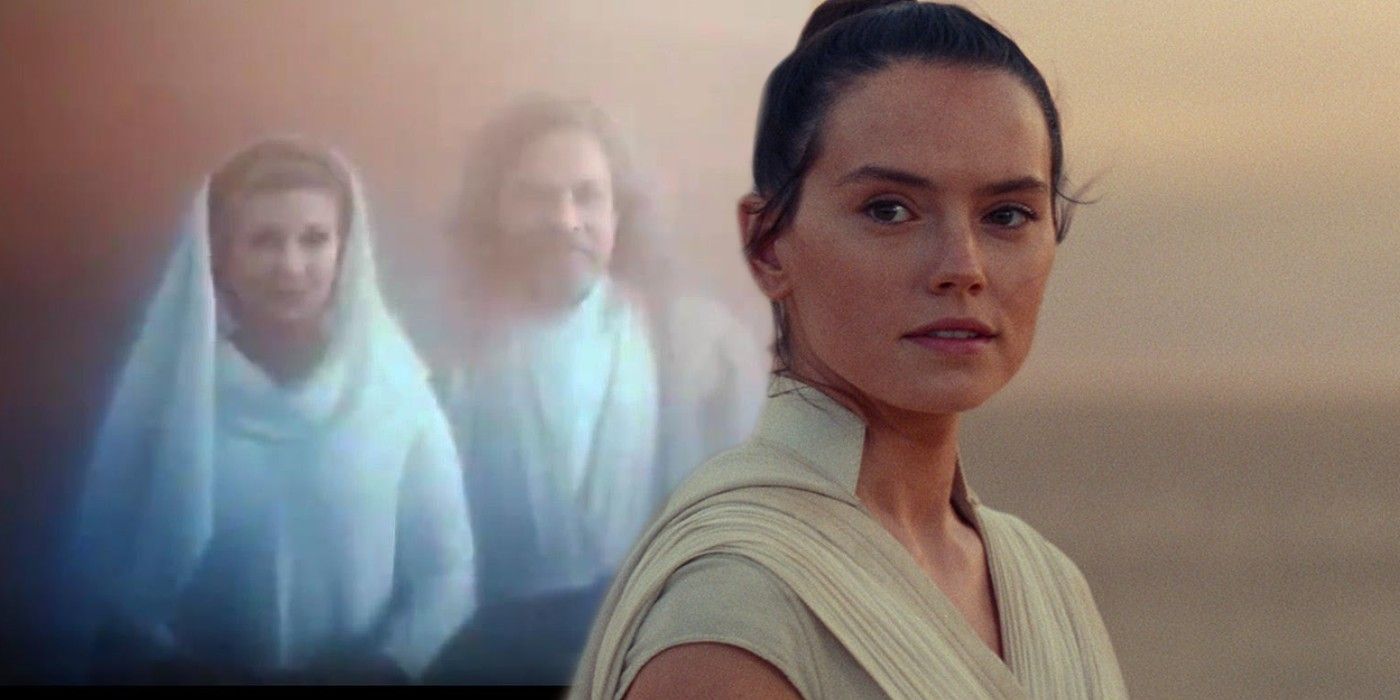Several new concepts were added to the Star Wars franchise in the sequel trilogy, many of which have been inspired by past storylines. Lucasfilm's sequel trilogy launched in 2015 with Star Wars: The Force Awakens, which grossed over $2 billion worldwide. Unfortunately, the trilogy soon lost its luster, and with the benefit of hindsight, it's largely seen as disappointing, mainly because the studio simply hadn't planned it out well enough and made too many course-corrections along the way.
For all that's the case, though, the Star Wars sequel trilogy actually introduced a lot of new concepts and ideas into the franchise. It borrowed a lot of these ideas from other mediums, notably from the old (now non-canon) Expanded Universe, and it brought them to life on the big screen to a greater audience than ever before. The sad truth is that many of these concepts were never sufficiently developed - or given enough time to do so. That is particularly the case with Star Wars: The Rise of Skywalker, where various tie-ins have attempted to clarify matters somewhat.
So here's your guide to all the new concepts and ideas introduced into Star Wars in Star Wars: The Force Awakens, Star Wars: The Last Jedi, and Star Wars: The Rise of Skywalker. As you'll see, it's quite an impressive list - even if defining and explaining these really requires wider reading.
Force Stasis
The Star Wars sequel trilogy opened with the display of a brand new Force power, with Kylo Ren sensing an incoming blaster bolt and freezing it in place rather than swatting it aside in the manner of any other Jedi or Sith. This power is called "Force Stasis", and it had previously been seen in the old Expanded Universe, but never before in the films. It served as an immediate demonstration of Kylo Ren's power in the dark side, although it also perfectly displays his desire for showmanship.
Crossguard Lightsabers
In addition to distinctive Force powers, Kylo Ren was immediately shown wielding a brand new style of lightsaber. This was supposed to be inspired by his researches into the dark side, as he discovered an ancient form of lightsaber and attempted to imitate it. Given how Kylo Ren generally attempted to imitate his grandfather, this is one of the few things he possessed that represented him as an individual. Appropriately enough, Kylo Ren's crossguard lightsaber was unfinished and unstable, notable for its ominous crackling sound that marked it out from all other lightsabers.
Rebel Stormtroopers
One of the greatest heroes of the sequel trilogy is John Boyega's Finn, an Imperial stormtrooper who rebels against his programming and soon becomes a leading figure in the Resistance. Thematically this is similar to the clone troopers who defied their own programming on occasion in Star Wars: The Clone Wars, but this idea had never been seen in the films themselves. It was further developed in Star Wars: The Rise of Skywalker, when Finn learned he was not the only stormtrooper to have rebelled, and recruited Jannah and her allies into the Resistance as well. Tie-ins have hinted rebel stormtroopers are actually Force-sensitive, because the dark side was used as part of the First Order's conditioning.
Forcebacks & Psychometry
Kylo Ren was not the only one to display new Force powers in Star Wars: The Force Awakens, with a strange and unusual new power triggering when she touched the lightsaber of Anakin and Luke Skywalker. Rey experienced a series of visions in an ambiguous scene that makes it difficult to say whether it was a manifestation of the will of the Force or some nascent Force power that burned within Rey.
Wayfinders
The sequel trilogy introduced ancient Jedi and Sith relics called Wayfinders, with Luke Skywalker having used one to locate Ahch-To in Star Wars: The Last Jedi and two serving as the MacGuffins in Star Wars: The Rise of Skywalker. Justina Ireland's novel A Test of Courage has recently suggested an explanation for how Wayfinders work; they are fixed to a vergence in the Force, and help a Force-sensitive navigate towards said vergence. It is apparently an extension of an actual Force power.
The Prime Jedi
Ahch-To was site of the first Jedi Temple, and it contained a mural dedicated to the Prime Jedi - founder of the Jedi Order. This Prime Jedi was represented as a servant of balance, rather than exclusively dedicated to the light side of the Force. The mural gave equal prominence to both light and dark, with the Prime Jedi representing the darkness in the light, and the light in the darkness. Essentially, he embodied the classic 'yin and yang' philosophy, one the Jedi had strayed from as the millennia passed.
Force Sever
When Rey discovered Jedi Master Luke Skywalker on Ahch-To, she learned he had cut himself off completely from the Force - or, at least, had attempted to do so, although the Force still wormed its way into his dreams. The technique he used is from Legends, and is known as "Force Sever". According to Luke, it took him years to master it, and he had managed to cut himself off from the Force sufficiently that he did not sense the destruction of Hosnian Prime, or even the death of Han Solo.
The Holdo Maneuver
For the first time in Star Wars history, Star Wars: The Last Jedi saw hyperspace weaponized. Admiral Holdo performed what has been described as a "one-in-a-million" maneuver that allowed her to take advantage of the acceleration of her ship to near-lightspeed in order to launch a kamikaze attack on Supreme Leader Snoke's flagship. Curiously enough, while the Holdo Maneuver seems to be being handled with care, the recent Star Wars: The High Republic transmedia initiative has embraced the idea of weaponizing hyperspace in other ways, clearly following this precedent.
Astral Projection
Another Force power from Legends, "astral projection" allowed the meditating Luke Skywalker to project himself across the galaxy to confront his nephew at the end of Star Wars: The Last Jedi. It appears to be a tremendously difficult power, and Luke's using the Force to this extent resulted in his death - but his sacrifice saved the Resistance nonetheless.
Lightspeed Skipping
One of the most bizarre scenes in Star Wars: The Rise of Skywalker saw Poe Dameron evade First Order pursuit by using a technique called "lightspeed skipping". This is one aspect of the sequel trilogy that has yet to be properly explained, in part because it defies the physics of the Star Wars franchise. Apparently it can only be conducted by the best pilots, and it's pretty damaging for any spaceship to perform the maneuver.
The Unknown Regions
The Unknown Regions (Legends version above) are a vast, uncharted area of space introduced in the old Expanded Universe, originally created by Timothy Zahn in his "Thrawn Trilogy" as the birthplace of Grand Admiral Thrawn. The First Order was born in the Unknown Regions, forged from an Imperial remnant who had fled into this unstable maelstrom, and several planets in the sequel trilogy - notably including Ahch-To in Star Wars: The Last Jedi - were in the depths of the Unknown Regions. They featured prominently in Star Wars: The Rise of Skywalker, which revealed an ancient Sith redoubt named Exegol that was hidden within them.
Exegol
Exegol is a unique vergence in the Force, and according to George Mann's short story "A Life Immortal", it is a place where "the veil between life and death [is] thin." That explains why Palpatine could only be resurrected by his cultists on Exegol, and also why the voices of the Jedi were able to communicate with Rey in her moment of need in the climactic battle at the end of Star Wars: The Rise of Skywalker. In strategic terms, Exegol has since been defined as a "box system," where there is literally only one way in or out. Tie-ins have confirmed box systems are ideal for military purposes; for establishing secure refueling depots, secret rendezvous points, or - most significantly of all - building an army without anybody being aware of your activities.
The Sith Eternal
Exegol may have been a barren wasteland, but Star Wars: The Rise of Skywalker revealed it was actually inhabited by a Sith cult who had been secreted away in the shadows of the Unknown Regions for millennia. The precise relationship between the so-called "Sith Eternal" cult and the Sith Lords is still uncertain, but the film's novelization suggested a retcon for the Rule of Two. Reading through an ancient Jedi text, Rey read words that redefine the very idea of the Rule of Two; "The Prime is one, but the Jedi are many. The Sith were Many but often emerge Ruled by Two."
Strand-Casts
Star Wars: The Rise of Skywalker revealed Imperial experiments had created genetically engineered organisms, known as Strand-Casts; the most notable of these was the being who called himself Supreme Leader Snoke. The Supreme Leader was actually a pawn of Palpatine himself, although, ironically, tie-ins have suggested he may have been completely unaware he was just a puppet. He had played a crucial role in seducing Kylo Ren to the dark side, but was ultimately killed by Kylo himself in Star Wars: The Last Jedi.
Palpatine Clones
Star Wars: The Rise of Skywalker further revealed the Emperor survived his apparent death in Return of the Jedi, and tie-ins and novelizations clarified he had done this by transferring his spirit into a clone body. The idea is hardly original - it was done in Legends, in the 1991 Dark Empire comics - but nonetheless this was far more spectacular. Unfortunately for Palpatine, the dark side corrupts a clone body, meaning he effectively became trapped on the planet Exegol.
Related: The Rise of Skywalker's Palpatine Clone Is Taken From Star Wars Legends
New ISD Superweapons
Palpatine's Sith loyalists had constructed a vast armada on Exegol, composed of new Imperial Star Destroyers that had been improved with an axial superlaser. According to Star Wars: The Rise of Skywalker Visual Dictionary, these warships are “fitted with efficient automation systems to cut down on crew requirements” and their superlasers - while vastly inferior to the Death Star - still have the power to level entire worlds. This was sadly seen with the destruction of Kijimi.
The Force Dyad
Rey and Kylo Ren stand at the center of the sequel trilogy, and the unusual bond between them was finally explained - after a fashion - in Star Wars: The Rise of Skywalker. They are a Force dyad, and according to tie-ins and novelizations that is a rare natural phenomenon created by the will of the Force, linking two individuals together and establishing a sort of synergy between them. It seems to require both the light and dark sides of the Force, explaining why neither Jedi nor Sith had seen a dyad in centuries.
Force Heal
Star Wars: The Rise of Skywalker introduced a new Force Heal power, one different to any seen before - even in the Expanded Universe. This allows a Force-sensitive to transfer their life energy to another, prompting their body to heal - and even potentially saving them from death. This is actually more logical than previous iterations of Force Heal, because it retains the sense of balance that is supposed to be so integral to the Force. There appears to be a spiritual dimension to this Force Heal power, because so far every subject has been transformed by it, and the experience of being healed by Rey seems to have been an important part of Kylo Ren's redemptive arc. Kylo Ren ultimately used Force Heal to save Rey's life, sacrificing himself.
"Switchblade" Lightsabers
Star Wars: The Rise of Skywalker saw Rey explore the wreckage of the Second Death Star, where she experienced a vision of a dark version of herself. This so-called "Dark Rey" wielded a new lightsaber design, a double-bladed weapon that could be called a "switchblade," with the two blades able to be folded up. The weapon was actually lifted from Star Wars: The Clone Wars, where it was used by treacherous Jedi Master Pong Krell, but this was the first time it appeared in the movies.
Essence Transfer
Palpatine's goal in Star Wars: The Rise of Skywalker was to draw Rey to his side, and have her strike him down in anger. Such an act - imbued with the power of the dark side - would allow his spirit to escape its clone body shell, and possess the body of his "granddaughter". This particular concept subtly rewrites the end of Return of the Jedi, because it explains why Palpatine was so keen for Luke Skywalker to kill him; because he would be able to possess the boy. When Darth Vader killed Palpatine out of love for his son, though, the Emperor's apprentice unwittingly made himself resistance to the Sith spirit, for the deed had been done in light rather than in darkness.
Force Drain
Unfortunately for Rey and Kylo Ren, Palpatine's mastery of the dark side allowed him to use the Force dyad to his own insidious ends. He exhibited another power from the old Expanded Universe that has never been seen on the big screen before, called "Force drain", that allowed him to draw the energy of the dyad into himself to restore his dying body. This ability was actually introduced into the Disney canon back in 2015, in Chuck Wendig's Aftermath trilogy, when a Sith cultist named Yupe Tashu mocked a prisoner. "Did you know that the Sith Lords could sometimes drain the Force energy from their captives," he asked. "Siphoning life from them and using it to strengthen their connection to the dark side? Extending their own lives, as well, so that they could live for centuries beyond their intended expiration?"
Force Storms
Force Lightning has always been the Emperor's stock in trade, but Star Wars: The Rise of Skywalker elevated that ability to a cosmic level, as the Dark Lord of the Sith unleashed a barrage of Force lightning upon the Resistance fleet that almost brought it down. As with many Force abilities demonstrated in the sequel era, such a phenomenal display of power is lifted straight from the Expanded Universe, where it was called a "Force Storm". Tie-ins have revealed Palpatine used a similar Force Storm to destroy Luke's Jedi Temple after Luke was betrayed by his nephew.
A New Definition Of Skywalkers
Star Wars: The Rise of Skywalker ended on a triumphant note, with Rey choosing the name and responsibility of the Skywalkers for herself. The idea to make Rey a Skywalker was planned back in 2014, ahead of the release of Star Wars: The Force Awakens. "I like the idea that she's going to be our Skywalker, but she's not a Skywalker," Lucasfilm's Pablo Hidalgo noted in a meeting of the Story Group. "Then, for our purposes, 'the Skywalker' is really a metaphor. It doesn't have to be something that's directly connected to blood." It's important to stress the Story Group are treating the 'Skywalker' as something subtly different to the Chosen One, a specific person who was born of the Force; rather, a "Skywalker" appears to simply be an agent of balance. Anakin and Luke together restored balance to the Force when they defeated the Emperor in Return of the Jedi, and Rey achieved the same when she destroyed Palpatine in Star Wars: The Rise of Skywalker.

